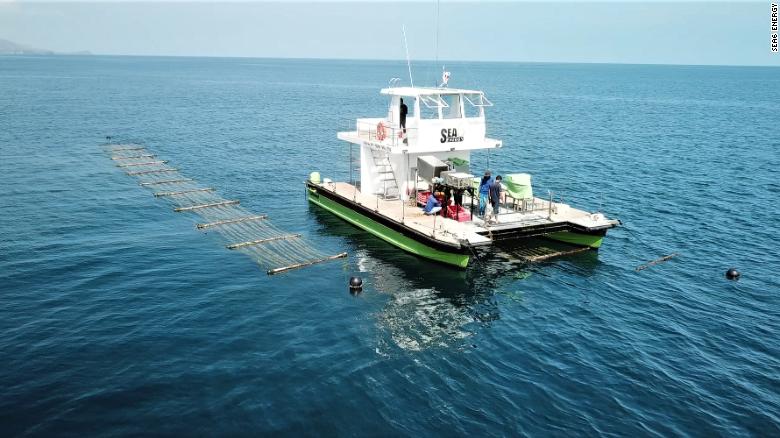Sea’s the limit: Seaweed has been slowly drifting into the agricultural world in the form of animal supplements that help reduce methane emissions in cattle, fertilizer, and as an ingredient in a variety of food products like sushi.
Seaweed farming is the fastest-growing aquaculture sector, growing almost as fast as the floating weed itself—which happens at a rate of up to two feet/day. The global seaweed industry doubled in size between 2005 and 2015, and produced 33M metric tons in 2018.
But labor is a major limiting factor.
Just keep seeding, just keep seeding: Individual pieces of seaweed are tied to rope lines or nets by hand. After it’s grown, seaweed producers have to manually harvest and “re-seed” the lines.
This costly production system makes seaweed economically viable only for high-priced applications.
But Sea 6 Energy founder Shrikumar Suryanarayan says his company could help.
Introducing the sea combine: Sea6 has developed an automated catamaran that hovers over rows of seaweed on lines at the company’s floating seaweed farms in Bali, Indonesia. The combine works its way down the rows, simultaneously slurping up the fully grown strands of seaweed and reseeding the lines.
Eli Whitney of the sea: Suryanarayan hopes the sea combine will cut costs and make seaweed cheap enough to be used as a biofuel and a biodegradable alternative to plastics.

